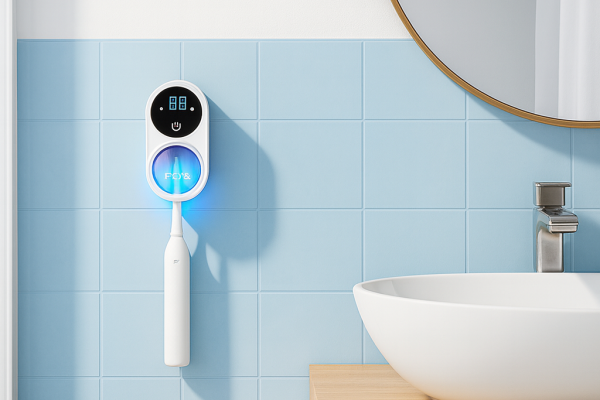 Your morning shower routine might be sabotaging your health. While you’re focused on getting clean, you could be absorbing a cocktail of toxic chemicals through your skin—the body’s largest organ.
Your morning shower routine might be sabotaging your health. While you’re focused on getting clean, you could be absorbing a cocktail of toxic chemicals through your skin—the body’s largest organ.
Here’s the problem: The beauty industry operates under a largely self-regulated framework in the United States. Unlike food or pharmaceuticals, cosmetic companies can use thousands of chemicals without government approval. Meanwhile, the European Union has already banned many substances that American companies still freely use in products sitting on your shower shelf right now.
The solution? Learn to identify the most dangerous ingredients and discover which body washes actually live up to their “natural” promises.
Why 99% of “Natural” Body Wash Claims Are Pure Marketing Fluff
Walk down any store aisle and you’ll see bottles screaming “NATURAL!” and “ORGANIC!” in bold letters. Here’s what they don’t tell you: these terms have zero legal meaning for cosmetics in the United States.
A company can slap “natural” on their label even if their product contains just one plant-based ingredient mixed with dozens of synthetic chemicals. The front of the bottle is marketing territory—the only truth lies in the ingredient list on the back.
This regulatory gap means you become the safety inspector for your own family’s health.
The 7 Toxic Chemicals Hiding in Your Body Wash (And Why They’re Dangerous)

After analyzing hundreds of body wash formulations, seven chemical categories stand out as the most problematic. These represent known carcinogens, hormone disruptors, and potent skin irritants that have no business near your body.
1. Formaldehyde & Formaldehyde-Releasing Agents
Common names on labels: Formaldehyde, Quaternium-15, DMDM Hydantoin, Imidazolidinyl Urea
Why it’s dangerous: The International Agency for Research on Cancer classifies formaldehyde as a known human carcinogen. Beyond cancer risk, it triggers severe allergic reactions and chronic skin irritation.
The sneaky part: Companies rarely list “formaldehyde” directly. Instead, they use preservatives that slowly release formaldehyde over time.
2. Phthalates
Common names: DBP, DEP, DINP, BBP, DMP (often hidden under “fragrance”)
Health risks: These hormone-disrupting chemicals interfere with your endocrine system, potentially causing reproductive damage and birth defects.
Why you won’t see them: Phthalates often hide behind the vague “fragrance” label, making them nearly impossible to identify without complete ingredient transparency.
3. Parabens
Label names: Methylparaben, Propylparaben, Ethylparaben, Isobutylparaben
The concern: Parabens mimic estrogen in your body, with studies linking them to increased breast cancer risk and reproductive harm.
Industry status: The EU has banned several parabens, but they remain common in American products.
4. “Fragrance” or “Parfum”
The legal loophole: This single word can hide a proprietary blend of hundreds of undisclosed chemicals, including phthalates and known allergens.
Health impacts: Allergies, immune system toxicity, and hormone disruption—all from ingredients you’ll never know you’re exposed to.
5. Sodium Lauryl Sulfate (SLS)
What it does: Creates that satisfying lather you associate with “clean”
The problem: This powerful degreasing agent (also used in garage floor cleaners) strips your skin’s natural protective barrier, causing dryness, irritation, and allergic reactions.
6. Cocamidopropyl Betaine (CAPB)
The irony: Despite being coconut-derived, this “natural” surfactant earned the title “Allergen of the Year” from the American Contact Dermatitis Society.
Key lesson: Plant-based doesn’t automatically mean skin-safe.
7. Retinyl Palmitate
Alternative names: Vitamin A Acetate
The FDA connection: Government studies show this synthetic vitamin A increases skin cancer risk when applied to skin exposed to sunlight.
Common use: Added as a “skin conditioning” agent in many body washes.
The Science-Backed Method for Reading Body Wash Labels
Forget the marketing claims on the front. Here’s your step-by-step process for evaluating any body wash:
Step 1: Flip to the Ingredient List
The ingredients appear in order of concentration. If any of the “toxic seven” appear in the first 10 ingredients, put that bottle back.
Step 2: Scan for Red Flag Terms
- “Fragrance” or “Parfum” without specific ingredient breakdown
- Any chemical ending in “-paraben”
- Formaldehyde-releasing preservatives
- SLS or its close cousin, SLES (Sodium Laureth Sulfate)
Step 3: Look for Third-Party Verification
The gold standard is EWG VERIFIED®—products bearing this mark meet the Environmental Working Group’s strictest health standards and provide complete ingredient transparency.
Step 4: Check the Preservation System
Safe alternatives to toxic preservatives include:
- Tocopherol (Vitamin E)
- Rosemary extract
- Potassium sorbate
- Sodium benzoate
Top 3 Natural Body Washes That Actually Pass the Safety Test
After analyzing ingredients, certifications, and consumer feedback, these four products stand out as genuinely safe options available on Amazon USA:
1. Dr. Bronner’s Pure-Castile Liquid Soap
Dr. Bronner’s Pure-Castile Magic Liquid Soap [click to view…]
Key ingredients: Organic coconut, palm, olive, hemp seed, and jojoba oils Why it works: Simple saponified oils create effective cleansing without residue Best for: Minimalists who want multi-purpose functionality Bonus: The unscented version eliminates any fragrance concerns
2. Aleavia Prebiotic Body Cleanse
Aleavia Body Cleanse – Organic & All-Natural Prebiotic Body Wash [click to view…]
Aleavia Body Cleanse – Organic & All-Natural Prebiotic Body Wash [click to view…]
Innovation: Supports skin’s natural microbiome with prebiotic ingredients Key components: Organic sea kelp, aloe vera, coconut oil, Dead Sea salt Therapeutic benefits: Helps with eczema, psoriasis, and other skin conditions Best for: Problem skin that needs gentle, healing care
3. Avalon Organics Bath & Shower Gel
Organics Bath & Shower Gel – Lavender By Avalon [click to view…]
Approach: Botanical-based cleansers with essential oil fragrances Key ingredient: Aloe barbadensis leaf juice Advantage: Established brand with consistent quality Ideal user: Those preferring essential oil scents over synthetic fragrances
Your 5-Step Action Plan for Safer Bathing
Step 1: Audit Your Current Products
Check your bathroom cabinet against the toxic seven list. You might be surprised what you find.
Step 2: Choose Your Replacement Strategy
- Conservative approach: Switch one product at a time
- Complete overhaul: Replace everything at once
- Budget-conscious: Start with Dr. Bronner’s (most affordable per use)
Step 3: Test Before You Fully Commit
Even “safe” products can cause individual reactions. Apply a small amount to your inner wrist, wait 24 hours, and check for any irritation.
Step 4: Simplify Your Routine
Consider multi-use products like Dr. Bronner’s, which works as body wash, shampoo, and even household cleaner.
Step 5: Stay Informed
Bookmark the EWG’s Skin Deep Database for checking any new products you’re considering.
The Bottom Line on Natural Body Wash Safety
Your skin absorbs up to 60% of what you put on it. Over years of daily use, those chemical exposures add up.
The good news? You don’t need a chemistry degree to make safer choices. Armed with knowledge of the toxic seven chemicals and a commitment to reading ingredient lists, you can transform your daily routine from a chemical experiment into a truly cleansing experience.
Remember: The most “natural” approach isn’t always about what’s in the bottle—it’s about what’s NOT in it.
Ready to make the switch? Start with one of the verified products above, and experience what truly clean bathing feels like. Your skin—and your long-term health—will thank you.
Looking for more natural living tips? The key to any successful health transformation starts with the products you use most often. Body wash is just the beginning.
Dora Decora is a biophilic interior design specialist and passionate blogger. With a deep commitment to integrating nature into living spaces, Dora specializes in creating environments that foster human-nature connections through thoughtful design elements. Her approach emphasizes sustainable materials, natural lighting, and organic patterns that enhance wellbeing and reduce environmental impact.
This post (https://homechroma.com/best-natural-body-wash) was originally published by Dora Decora on Home Chroma. As an Amazon Associates partner, we are compensated for all qualifying purchases.
























